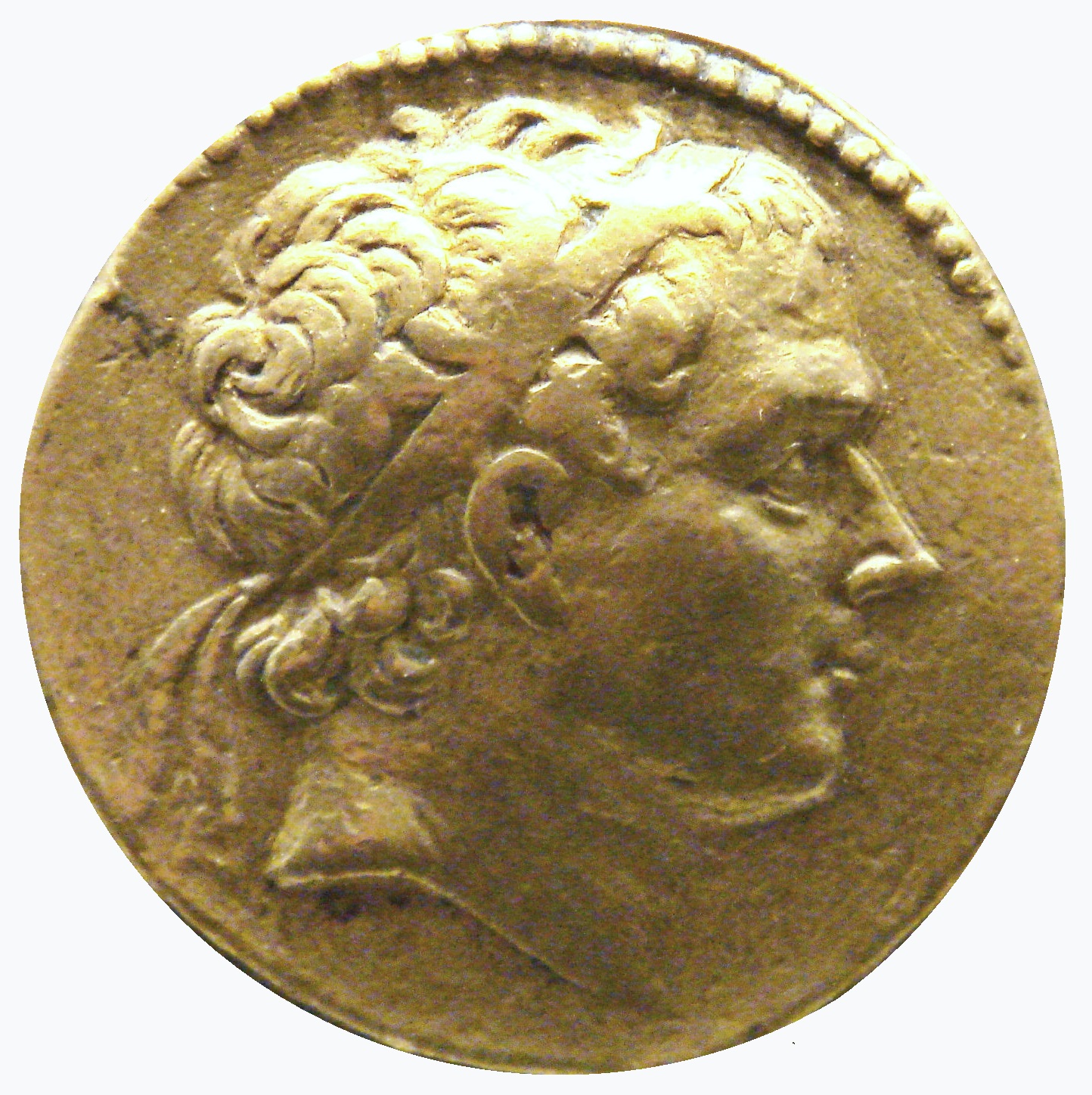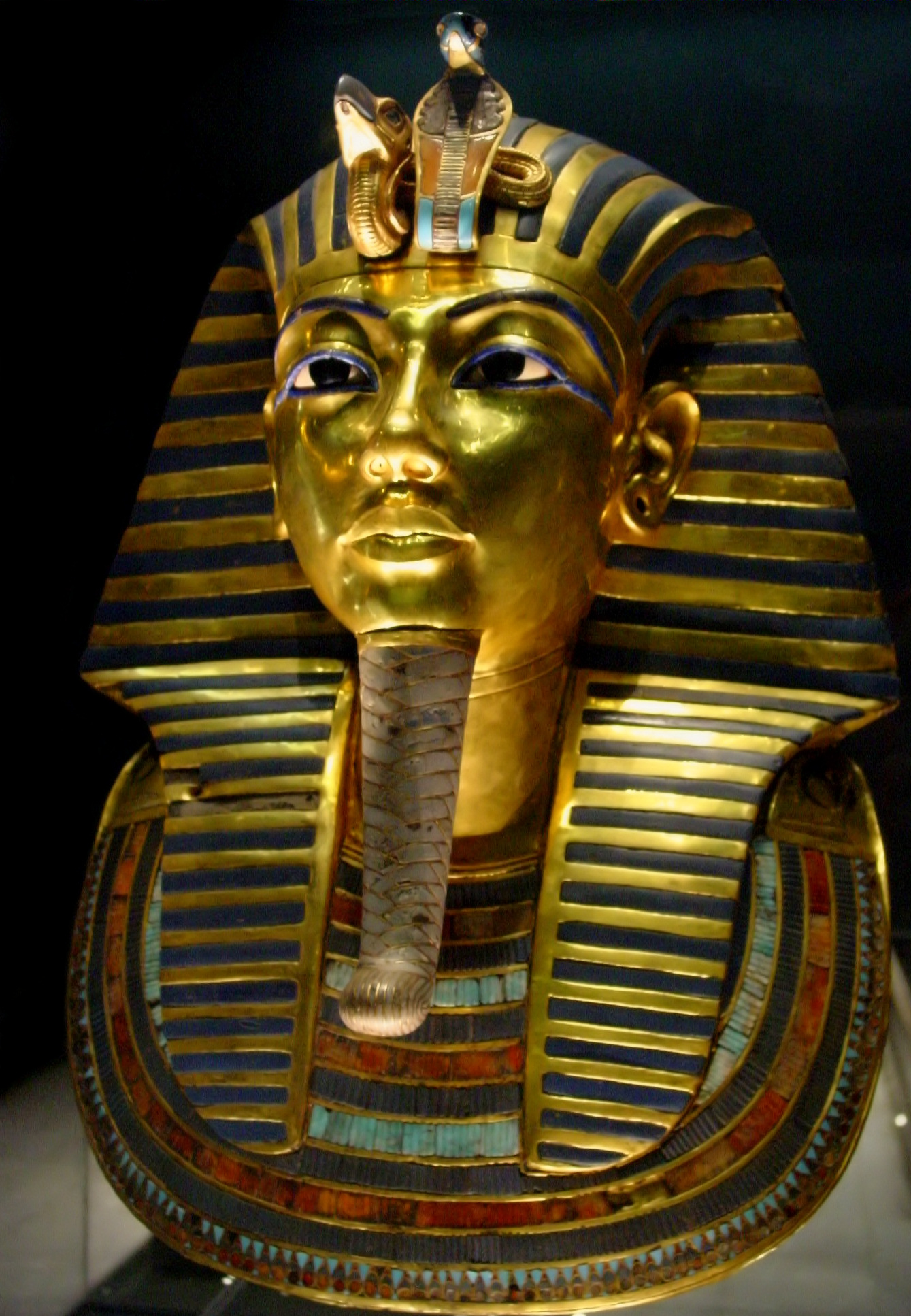|
Harpoon (hieroglyph)
The ancient Egyptian Harpoon, (archaeological, single-barbed type), is one of the oldest language hieroglyphs from ancient Egypt. It is used on the famous Narmer Palette of Pharaoh Narmer from the 31st century BC, in an ''archaic'' hieroglyphic form. Language usage of harpoon The hieroglyphic equivalent of the Harpoon is ''wꜥ'', and means "1", a single item, and it is one of the 102 Egyptian biliterals; its use is extensive throughout the language history, and hieroglyphic tomb reliefs and story-telling of Ancient Egypt. Rosetta Stone usage In the 198 BC Rosetta Stone of Ptolemy V Epiphanes, the Harpoon hieroglyph is used only once, in line 8: "crowns, 10 ..with uraeus on their fronts, on one every among them" ("on each among them"). Gallery Image:NarmerPalette ROM-gamma.jpg, Front side usage of harpoon-(left photo), Narmer Palette Image:NarmerPalette ROM extract.jpg, Closeup of archaic form on Narmer Palette Image:GD-EG-Alex-MuséeNat046.JPG, Example usage in text passa ... [...More Info...] [...Related Items...] OR: [Wikipedia] [Google] [Baidu] |
Egyptian Language
The Egyptian language or Ancient Egyptian ( ) is a dead Afro-Asiatic language that was spoken in ancient Egypt. It is known today from a large corpus of surviving texts which were made accessible to the modern world following the decipherment of the ancient Egyptian scripts in the early 19th century. Egyptian is one of the earliest written languages, first being recorded in the hieroglyphic script in the late 4th millennium BC. It is also the longest-attested human language, with a written record spanning over 4000 years. Its classical form is known as Middle Egyptian, the vernacular of the Middle Kingdom of Egypt which remained the literary language of Egypt until the Roman period. By the time of classical antiquity the spoken language had evolved into Demotic, and by the Roman era it had diversified into the Coptic dialects. These were eventually supplanted by Arabic after the Muslim conquest of Egypt, although Bohairic Coptic remains in use as the liturgical lan ... [...More Info...] [...Related Items...] OR: [Wikipedia] [Google] [Baidu] |
Narmer Palette
The Narmer Palette, also known as the Great Hierakonpolis Palette or the Palette of Narmer, is a significant Egyptian archeological find, dating from about the 31st century BC, belonging, at least nominally, to the category of cosmetic palettes. It contains some of the earliest hieroglyphic inscriptions ever found. The tablet is thought by some to depict the unification of Upper and Lower Egypt under the king Narmer. Along with the Scorpion Macehead and the Narmer Maceheads, also found together in the main deposit at Nekhen, the Narmer Palette provides one of the earliest known depictions of an Egyptian king. On one side, the king is depicted with the bulbed White Crown of Upper (southern) Egypt, and the other side depicts the king wearing the level Red Crown of Lower (northern) Egypt, which also makes it the earliest known example of a king wearing both types of headdress. The Palette shows many of the classic conventions of Ancient Egyptian art, which must already have been ... [...More Info...] [...Related Items...] OR: [Wikipedia] [Google] [Baidu] |
Narmer
Narmer ( egy, Wiktionary:nꜥr-mr, nꜥr-mr, meaning "painful catfish," "stinging catfish," "harsh catfish," or "fierce catfish;" ) was an ancient Egyptian pharaoh of the Early Dynastic Period (Egypt), Early Dynastic Period. He was the successor to the Naqada III, Protodynastic king Ka (pharaoh), Ka. Many scholars consider him the unifier of Egypt and founder of the First Dynasty of Egypt, First Dynasty, and in turn the first king of a unified Egypt. He also had a prominently noticeable presence in Canaan, compared to his predecessors and successors. A majority of Egyptologists believe that Narmer was the same person as Menes.Neithhotep is thought to be his queen consort or his daughter. Historical identity Although highly interrelated, the questions of "who was Menes?" and "who unified Egypt?" are actually two separate issues. Narmer is often credited with the unification of Egypt by means of the conquest of Lower Egypt by Upper Egypt. While Menes is traditionally considered ... [...More Info...] [...Related Items...] OR: [Wikipedia] [Google] [Baidu] |
31st Century BC
The 31st century BC was a century that lasted from the year 3100 BC to 3001 BC. Events *c. 3100 BC: Polo ( mni, Sagol Kangjei) was first played in Manipur state. *c. 3100 BC?: The Anu Ziggurat and White Temple are built in Uruk. *c. 3100 BC?: Predynastic period (Neolithic) ends in Ancient Egypt. *c. 3100 BC?: Early Dynastic (Archaic) period starts in Ancient Egypt. *c. 3100 BC?: The first temple of Tarxien is in use by the Neolithic inhabitants of Malta. *c. 3100 BC?: First stage in the construction of Stonehenge. *c. 3100 BC – 2600 BC: Skara Brae, Orkney Islands, Scotland is inhabited. *c. 3090 BC: Narmer (Menes) unifies Upper and Lower Egypt into one country; he rules this new country from Memphis. *c. 3051 BC: The oldest currently living organism, a Great Basin bristlecone pine, undergoes germination in the White Mountains of California. Inventions, discoveries, introductions * Drainage and sewage system in the Indus Valley * Dams, canals, stone sculptures using incl ... [...More Info...] [...Related Items...] OR: [Wikipedia] [Google] [Baidu] |
Egyptian Biliteral Signs
The biliteral Egyptian hieroglyphs are hieroglyphs which represent a specific sequence of two consonants. The listed hieroglyphs focus on the consonant combinations rather than the meanings behind the hieroglyphs. See also *Transliteration of ancient Egyptian *Egyptian uniliteral signs *Egyptian triliteral signs The following is a list of Egyptian hieroglyphs with triconsonantal phonetic value. See also *Transliteration of ancient Egyptian *Egyptian uniliteral signs As used for Egyptology, transliteration of Ancient Egyptian is the process of convertin ... * List of hieroglyphs References *James P. Allen, ''Middle Egyptian: An Introduction to the Language and Culture of Hieroglyphs'', Cambridge University Press, 15 Apr 201025ff External links * {{hieroglyph-stub ... [...More Info...] [...Related Items...] OR: [Wikipedia] [Google] [Baidu] |
Rosetta Stone
The Rosetta Stone is a stele composed of granodiorite inscribed with three versions of a decree issued in Memphis, Egypt, in 196 BC during the Ptolemaic dynasty on behalf of King Ptolemy V Epiphanes. The top and middle texts are in Ancient Egyptian using hieroglyphic and Demotic scripts respectively, while the bottom is in Ancient Greek. The decree has only minor differences between the three versions, making the Rosetta Stone key to deciphering the Egyptian scripts. The stone was carved during the Hellenistic period and is believed to have originally been displayed within a temple, possibly at Sais. It was probably moved in late antiquity or during the Mamluk period, and was eventually used as building material in the construction of Fort Julien near the town of Rashid (Rosetta) in the Nile Delta. It was found there in July 1799 by French officer Pierre-François Bouchard during the Napoleonic campaign in Egypt. It was the first Ancient Egyptian bilingual text recov ... [...More Info...] [...Related Items...] OR: [Wikipedia] [Google] [Baidu] |
Ptolemy V Epiphanes
egy, Iwaennetjerwymerwyitu Seteppah Userkare Sekhem-ankhamun Clayton (2006) p. 208. , predecessor = Ptolemy IV , successor = Ptolemy VI , horus = '' ḥwnw-ḫꜤj-m-nsw-ḥr-st-jt.f''''Khunukhaiemnisutkhersetitef'' The youth who has appeared as king on his father's throne , horus_hiero = H-wn:n-nw:W-A17-xa:a:W*Z4-Aa15:sw*A43-D2:Z1-Q1-t:O1-t:f:Z1:f , nebty = ''wr-pḥtj smn-tꜢwj snfr-tꜢmrj mnḥ-jb-ḫr-nṯrw''''Werpehty Sementawy Senefertameri Menekhibkhernetjeru''The one great of strength, who has established the Two Lands and made Ta-mery perfect (by) being efficacious before the gods , nebty_hiero = wr:r-F9*F9:Z9:D40-s-U32-wAD-M24-s-nfr-N16:N21\*N21:O5*t:O49-mnx-ib:Z1-x:r-nTr*Z1-nTr*Z1-nTr*Z1 , golden = '' wꜢḏ-Ꜥnḫ-n-ḥnmmt nb-ḥbw-sd-mj-ptḥ jty-mj-rꜤ''''Wadjankhenkhenmemet Nebkhebusedmiptah Itymire'' The one who has made the life of mankind flourish, a possessor of Sed festivals like Ptah and a sovereign like Ra , golden_ ... [...More Info...] [...Related Items...] OR: [Wikipedia] [Google] [Baidu] |
Uraeus
The Uraeus (), or Ouraeus (Ancient Greek: , ; Egyptian: ', "rearing cobra"), ''(plural: Uraei)'' is the stylized, upright form of an Egyptian cobra, used as a symbol of sovereignty, royalty, deity and divine authority in ancient Egypt. Symbolism The Uraeus is a symbol for the goddess Wadjet.Egyptian-Gods She was one of the earliest Egyptian deities and was often depicted as a cobra, as she is the serpent goddess. The center of her cult was in Per-Wadjet, later called Buto by the Greeks. She became the patroness of the Nile Delta and the protector of all of Lower Egypt. The pharaohs wore the uraeus as a head ornament: either with the body of Wadjet atop the head, or as a crown encircling the head; this indicated Wadjet's protection and reinforced the pharaoh's claim over the land. In whatever manner that the Uraeus was displayed upon the pharaoh's head, it was, in effect, part of the pharaoh's crown. The pharaoh was recognized only by wearing the Uraeus, which conveye ... [...More Info...] [...Related Items...] OR: [Wikipedia] [Google] [Baidu] |
Gardiner's Sign List
Gardiner's Sign List is a list of common Egyptian hieroglyphs compiled by Sir Alan Gardiner. It is considered a standard reference in the study of ancient Egyptian hieroglyphs. Gardiner lists only the common forms of Egyptian hieroglyphs, but he includes extensive subcategories, and also both vertical and horizontal forms for many hieroglyphs. He includes size-variation forms to aid with the reading of hieroglyphs in running blocks of text. In contrast, for example, the Budge Reference has about 1,000 hieroglyphs listed in 50 pages, but with no size variations. Gardiner does not cross-index signs; once put on the list, other significant uses may be overlooked. One example of this is G16, nbtỉ, the ideogram for the Two Ladies, goddesses Wadjet as the cobra and Nekhbet as the white vulture. These are the protective and patron goddesses of the separate Egyptian kingdoms that joined into ancient Egypt, who were both then displayed on the uraeus of Wadjet when the unification ... [...More Info...] [...Related Items...] OR: [Wikipedia] [Google] [Baidu] |
List Of Egyptian Hieroglyphs
The total number of distinct Egyptian hieroglyphs increased over time from several hundred in the Middle Kingdom to several thousand during the Ptolemaic Kingdom. In 1928/1929 Alan Gardiner published an overview of hieroglyphs, Gardiner's sign list, the basic modern standard. It describes 763 signs in 26 categories (A–Z, roughly). Georg Möller compiled more extensive lists, organized by historical epoch (published posthumously in 1927 and 1936). In Unicode, the block ''Egyptian Hieroglyphs'' (2009) includes 1071 signs, organization based on Gardiner's list. As of 2016, there is a proposal by Michael Everson to extend the Unicode standard to comprise Möller's list. Subsets Notable subsets of hieroglyphs: * Determinatives * Uniliteral signs * Biliteral signs * Triliteral signs * Egyptian numerals Letter classification by Gardiner List of hieroglyphs In Unicode Unicode character names follow Gardiner's sign list (padded with zeroes to three digits, i.e. Gardi ... [...More Info...] [...Related Items...] OR: [Wikipedia] [Google] [Baidu] |
Egyptian Hieroglyphs: Warfare-hunting-butchery
Egyptian describes something of, from, or related to Egypt. Egyptian or Egyptians may refer to: Nations and ethnic groups * Egyptians, a national group in North Africa ** Egyptian culture, a complex and stable culture with thousands of years of recorded history ** Egyptian cuisine, the local culinary traditions of Egypt * Egypt, the modern country in northeastern Africa ** Egyptian Arabic, the language spoken in contemporary Egypt ** A citizen of Egypt; see Demographics of Egypt * Ancient Egypt, a civilization from c. 3200 BC to 343 BC ** Ancient Egyptians, ethnic people of ancient Egypt ** Ancient Egyptian architecture, the architectural structure style ** Ancient Egyptian cuisine, the cuisine of ancient Egypt ** Egyptian language, the oldest known language of Egypt and a branch of the Afroasiatic language family * Copts, the ethnic Egyptian Christian minority ** Coptic language or Coptic Egyptian, the latest stage of the Egyptian language, spoken in Egypt until the 17th ce ... [...More Info...] [...Related Items...] OR: [Wikipedia] [Google] [Baidu] |



